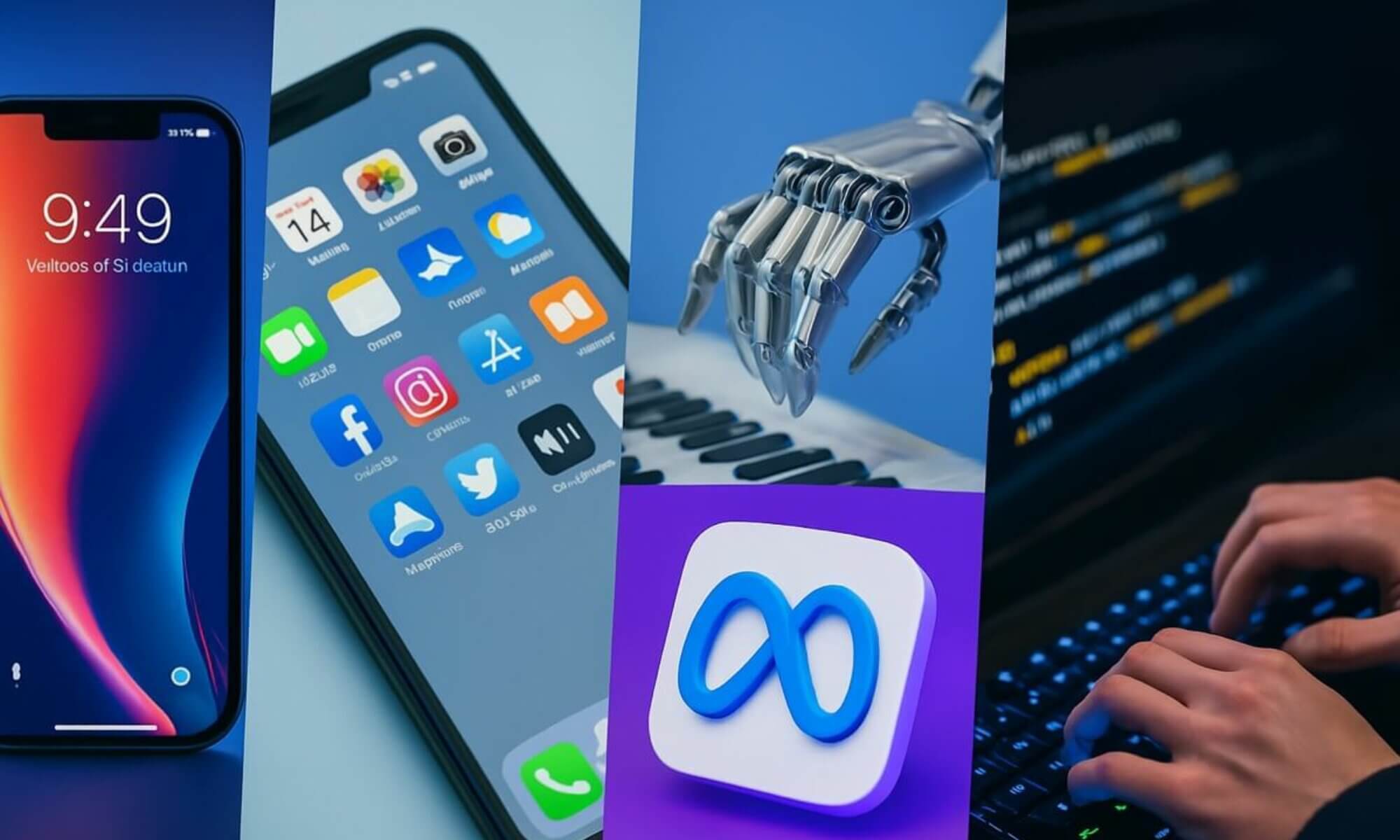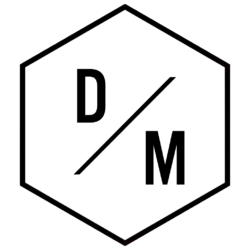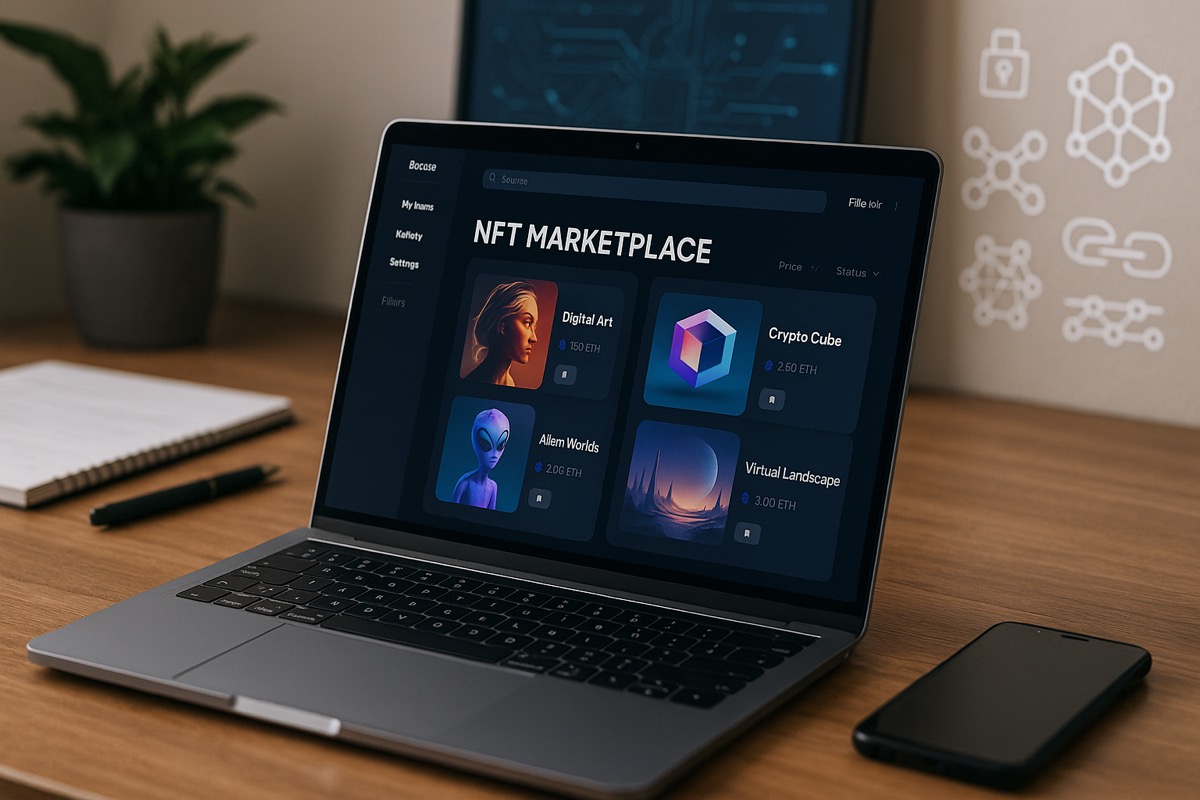In recent years, nft marketplace development has emerged as a transformative force in the digital economy, enabling creators, collectors, and investors to interact with unique digital assets on blockchain-powered platforms. An NFT (non-fungible token) marketplace is a specialized online platform where users can mint, buy, sell, and trade tokens that represent ownership of unique digital or physical items, from digital art to virtual real estate.
The development of such marketplaces involves a complex integration of blockchain technology, smart contracts, secure payment gateways, and intuitive user interfaces. As the demand for NFTs continues to surge, businesses and developers alike are seeking to create scalable, secure, and feature-rich marketplaces that cater to diverse user needs. This comprehensive guide delves into the key considerations, technical components, and best practices for building a successful NFT marketplace from the ground up.
1. Understanding the Foundations of NFT Marketplaces
Before embarking on nft marketplace development, it is crucial to grasp the underlying concepts:
- Blockchain Technology: NFTs are typically minted on public blockchains such as Ethereum, Binance Smart Chain, or Solana. Each blockchain offers distinct advantages in terms of transaction speed, cost, and ecosystem support.
- Smart Contracts: Self-executing contracts written in blockchain-specific languages (e.g., Solidity for Ethereum) govern the minting, buying, and selling of NFTs. These contracts ensure trustless, automated transactions without intermediaries.
- Token Standards: The ERC-721 and ERC-1155 standards define how NFTs should behave on Ethereum-like blockchains. ERC-721 represents a single unique asset, while ERC-1155 allows for batch transfers and more efficient storage of semi-fungible tokens.
- Decentralized Storage: Since blockchains are not suitable for storing large files (like images or video), decentralized storage solutions such as IPFS (InterPlanetary File System) or Arweave are used to host the digital content linked to NFTs.
- Marketplace Architecture: Frontend, backend, smart contracts, and storage layers must be seamlessly integrated. A robust API layer facilitates communication between the user interface and blockchain nodes.
Understanding these fundamentals lays the groundwork for designing an architecture that balances performance, security, and user experience.
2. Defining Your NFT Marketplace’s Unique Value Proposition
The NFT space is competitive, with numerous platforms vying for attention. To stand out, your marketplace should offer a clear unique value proposition (UVP). Consider:
- Niche Focus: Cater to specific asset classes — such as music NFTs, digital collectibles, or virtual gaming assets.
- Enhanced User Experience: Simplify wallet onboarding, make gas fees transparent, and provide one-click minting features.
- Community Engagement: Integrate social features — profiles, follow systems, comment threads — to foster creator–collector relationships.
- Curatorial Standards: Implement a vetting process or curator programs to ensure high-quality listings.
- Cross-Chain Compatibility: Allow users to interact with multiple blockchains through bridges or multi-chain smart contracts.
By articulating your UVP, you can tailor features and design choices to attract and retain your target audience.
3. Technical Stack and Architecture
A typical nft marketplace development technical stack comprises:
- Frontend:
- Frameworks: React, Vue.js, or Angular for dynamic single-page applications.
- Web3 Integration: Libraries like Web3.js, Ethers.js, or Moralis SDK to interact with blockchain nodes and wallets.
- Wallet Support: MetaMask, WalletConnect, Coinbase Wallet for user authentication and transaction signing.
- Backend:
- Server: Node.js, Python (Django/Flask), or Go for RESTful or GraphQL APIs.
- Database: PostgreSQL or MongoDB for off-chain data such as user profiles, metadata, and transaction logs.
- Indexing Services: The Graph or custom indexing to query on-chain data efficiently.
- Storage: IPFS nodes, Pinata Cloud, or Arweave for hosting NFT assets and metadata.
- Blockchain Layer:
- Smart Contracts: Written in Solidity (Ethereum), Rust (Solana), or equivalent.
- Testing Frameworks: Truffle, Hardhat, or Foundry for contract development and testing.
- Deployment Tools: Remix, Hardhat scripts, or Buidler for contract deployment and verification.
- DevOps and Security:
- CI/CD Pipeline: GitHub Actions or GitLab CI for automated testing and deployment.
- Containerization: Docker and Kubernetes for scalable microservices.
- Monitoring and Alerts: Prometheus, Grafana, or third-party services for uptime and performance tracking.
This multi-layered architecture ensures modularity, scalability, and maintainability throughout the project lifecycle.
4. Smart Contract Development Best Practices
Smart contracts are the bedrock of NFT marketplaces. Key considerations include:
Contract Design Patterns:
- Ownable: Restrict administrative functions to the contract owner.
- Pausable: Enable emergency stops to mitigate unforeseen vulnerabilities.
- Upgradeable Proxies: Leverage patterns like OpenZeppelin’s Transparent Proxy to allow contract upgrades without losing state.
Gas Optimization:
- Minimize storage writes and use efficient data types (e.g., uint256).
- Batch operations where possible (ERC-1155).
Security Audits:
- Engage reputable firms (CertiK, OpenZeppelin) for comprehensive audits.
- Perform internal audits using static analysis tools (MythX, Slither).
Testing Suite:
- Write unit and integration tests covering edge cases (token transfers, reentrancy).
- Simulate scenarios like high-concurrency minting or cross-shard interactions.
Adherence to these practices mitigates risks of exploits and ensures user trust in the platform.
5. User Experience (UX) and Interface Design
A seamless UI/UX can be a decisive factor in adoption:
- Onboarding Flow:
- Provide guided setup for first-time crypto users.
- Implement “fiat-to-crypto” rails via integrated payment gateways (MoonPay, Transak).
- Wallet and Gas Management:
- Real-time gas fee estimations and strategies (speed up, slow).
- Support for gasless transactions via meta transactions and relayer services (Biconomy).
- Search and Discovery:
- Advanced filters (price range, rarity, creator).
- Personalized recommendations based on user behavior and holdings.
- Listing and Minting:
- Intuitive form for uploading assets, setting royalties, and selecting auctions vs. fixed-price sales.
- Drag-and-drop interfaces and live previews.
- Responsive Design:
- Mobile-first approach for on-the-go trading.
- Progressive Web App (PWA) capabilities for offline use and push notifications.
Prioritizing UX ensures both novice and experienced users can navigate the marketplace with ease.
6. Core Features and Functionalities
When planning nft marketplace development, include these core features:
- Minting Module: Allow creators to mint single or batch NFTs with customizable metadata.
- Marketplace Listings: Display active, past, and upcoming auctions; enable fixed-price sales.
- Auction Engine: Support English, Dutch, and reserve-price auctions with automated bid increments.
- Wallet Dashboard: Show user holdings, transaction history, and portfolio valuation.
- Royalties System: Enforce creator royalties on secondary sales per ERC-2981 or custom implementations.
- Social Features: Follow creators, like listings, and comment threads to boost community engagement.
- Analytics and Reporting: Provide sales volume charts, floor price trends, and user activity metrics.
- Notifications: Email, SMS, or in-app alerts for bids, sales, and marketplace announcements.
Offering a rich feature set helps capture diverse user segments and use cases.
7. Monetization Strategies
Sustainable marketplaces require robust revenue models:
- Transaction Fees: Charge a percentage (typically 2.5–5%) on each sale.
- Listing Fees: Small fee to list an item, discouraging spam and covering minting gas costs.
- Premium Memberships: Offer subscription tiers with discounts, early access to drops, or exclusive features.
- Sponsored Drops: Partner with brands or influencers to host paid NFT drops.
- White-Label Solutions: Provide the marketplace codebase as a service to enterprises seeking private NFT platforms.
A diversified monetization mix balances user affordability with platform profitability.
8. Security, Compliance, and Legal Considerations
Security and regulatory compliance are paramount:
- Smart Contract Security: Regular audits and bug bounty programs.
- Web Security: Harden against XSS, CSRF, SQL injection, and DDoS attacks.
- Data Protection: Comply with GDPR and other privacy regulations; minimize storage of personal data.
- KYC/AML: For fiat on-ramps or high-value transactions, integrate KYC providers (Sumsub, Onfido).
- Intellectual Property: Implement DMCA takedown processes and dispute resolution for stolen or infringing content.
Proactive governance and transparent policies foster user confidence and long-term growth.
9. Scaling and Performance Optimization
To handle growing user bases and transaction volumes:
- Layer-2 Solutions: Integrate rollups (Optimism, Arbitrum) or sidechains (Polygon) for lower fees and faster confirmations.
- Caching and Indexing: Use Redis or Elasticsearch to serve frequently requested data.
- Microservices Architecture: Decouple services for listings, user management, and notifications to scale independently.
- Auto-Scaling Infrastructure: Leverage Kubernetes clusters with horizontal pod autoscaling.
- Load Testing: Simulate peak events (major NFT drops) using tools like Locust or JMeter.
Scalability measures ensure consistent performance even under high demand.
10. Future Trends and Innovations
The NFT ecosystem continues evolving, introducing new opportunities:
- Fractional Ownership: Tokenize high-value NFTs into tradable fractions for broader access.
- Interoperable Marketplaces: Cross-platform listings via protocols like Rarible’s Marketplace Protocol.
- Augmented Reality (AR) NFTs: Bring digital art and collectibles into real-world environments.
- Dynamic NFTs: Evolve token metadata based on external inputs (oracles, user actions, or time).
- Social Tokens and Community Governance: DAO-driven marketplaces governed by token holders’ votes.
- Environmental Sustainability: Adoption of proof-of-stake and carbon offsetting initiatives to reduce ecological impact.
Staying abreast of these trends equips developers to innovate and maintain competitive advantage.
Conclusion
Building an NFT marketplace is a multidisciplinary endeavor that spans blockchain engineering, smart contract security, user-centric design, and rigorous legal compliance. By grounding nft marketplace development in solid technical foundations, a clear UVP, and robust feature sets, entrepreneurs and developers can launch platforms that not only facilitate seamless trading of unique digital assets but also foster vibrant communities. As the NFT landscape rapidly evolves, continuous iteration, security vigilance, and responsiveness to user feedback will be essential for long-term success. Whether you aim to cater to digital artists, gaming enthusiasts, or institutional collectors, the roadmap outlined here offers a comprehensive blueprint to navigate the complexities of crafting a next-generation NFT marketplace.


